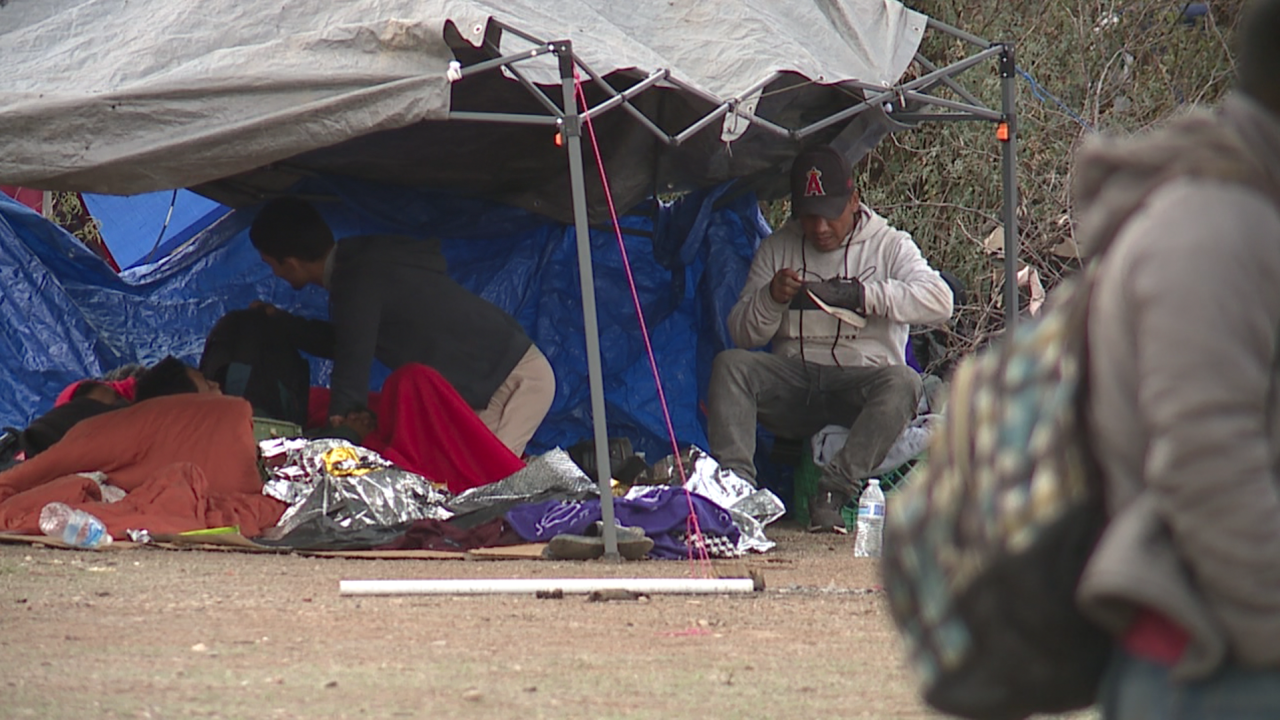SASABE, Ariz. (KGUN) — Despite the difficult journey and violent Mexican cartels, thousands of migrants are crossing the Arizona-Sonora border in very rugged terrain.
After seeing increasing numbers of migrants crossing the border and increasing wait times for Border Patrol to process them, volunteers a few months ago set up a camp along the border wall, about 15 miles east of Sasabe, Arizona.
PREVIOUS COVERAGE
- More migrants, new countries of origin arriving near Sasabe, AZ
- Why humanitarian aid groups are calling out Border Patrol
- Migrants walk and wait for Border Patrol at camp near Sasabe
- After January lull, large migrant groups cross near Sasabe
Volunteers have brought down daily food and supplies to the camp. The numbers of daily migrants have fluctuated over the past several weeks.
“We could go a few days, two weeks, not see a person. And then, maybe 300 people,” said aid volunteer Gail Kocourek.
“At this camp, we have seen families from 18 countries, at once. In one day,” aid volunteer Dora Rodriguez added.
Migrants seeking asylum can wait hours at the camp for Border Patrol to detain and process them.
There are only tents and tarps, and no bathrooms, at the makeshift camp. But it is still a welcome sight for migrants.

Dagoberto Garcia spoke with KGUN, thanking god he’s alive after a nearly month-long journey from his home in Honduras.
He says that includes four days where he was kidnapped by the mafia in Mexico.
Garcia was able to get his injured feet treated by volunteers at the camp. Days of walking took a toll on him, and not just physically.
His goal is to find work in the U.S. to support his wife and two kids in Honduras, but he would rather they stay *there and not make the dangerous journey.
“I can work here and give them a life there,” he said through a translation. “But after what I've been through on my path, no. It doesn’t cross my mind to bring anyone from there, from my family.”
Rodriguez knows what the journey is like. She fled violence in El Salvador in 1980.
“And we were left behind in the hot summer in the Organ Pipe area,” she recalled. “And 13 people in my group died.”
Rodriguez says the volunteer groups bringing food and supplies to the camp are funded only by private donations and interfaith communities.
“I cannot imagine myself not doing this, you know?” said Rodriguez. “It’s just part of my healing… To me, really, it doesn’t matter what side of the aisle you are in, this is about people. This is about receiving them, with, really, with dignity.”
Rodriguez says compared to crossing 44 years ago, there are now more migrants from more countries. And smuggling groups are now more sophisticated.
“This is something that is not gonna stop,” said Rodriguez. “It has not stopped, at least 44 years, that I’ve seen.”
Crossings continue even though these asylum seekers don’t know if they’ll be able to work or stay in the U.S. Those that spoke with KGUN at the camp say the journey is worth the risk just to give themselves a chance.




